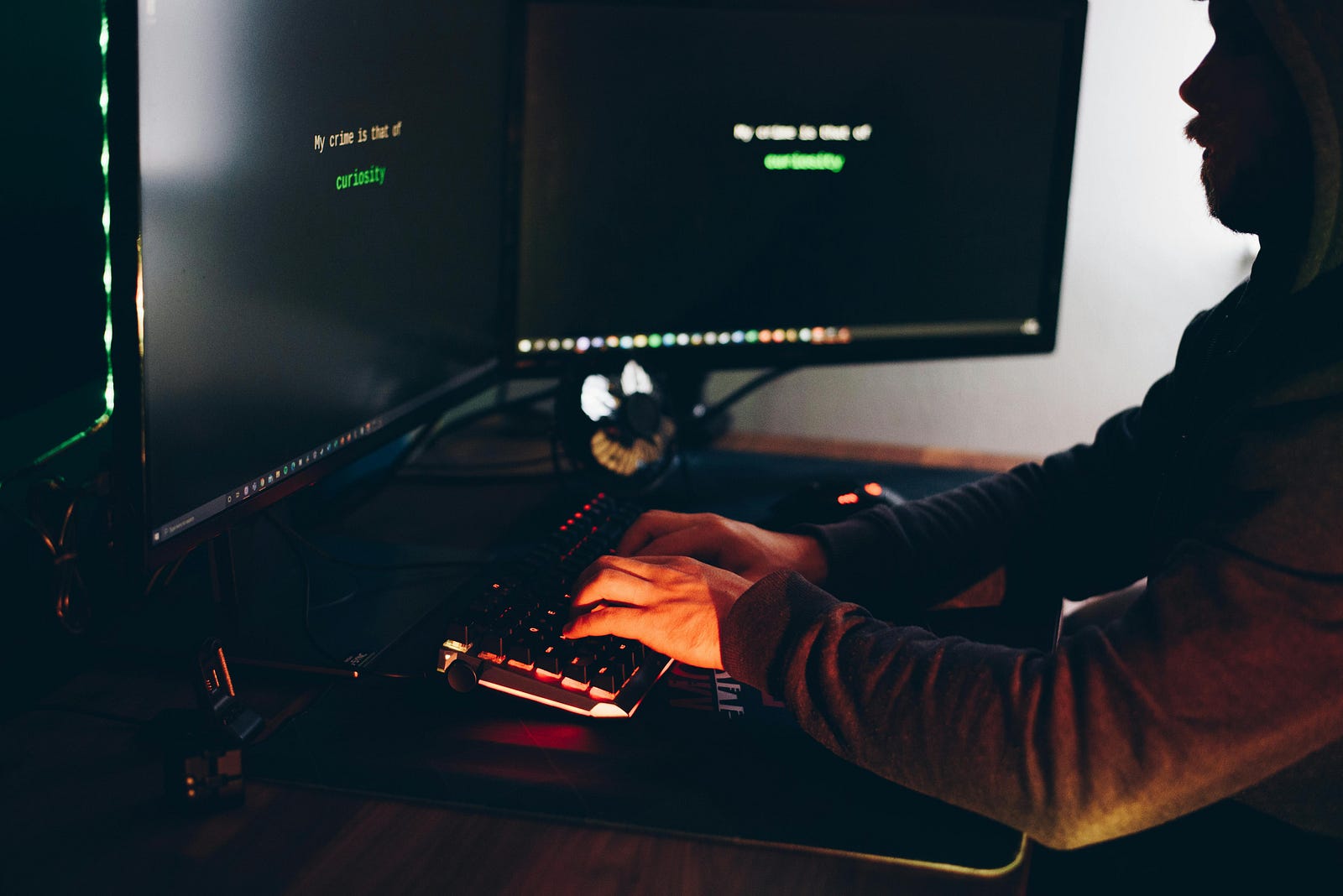Cybercriminals aren't waiting for you to slip up - they're counting on it.
In 2025, remote tech professionals are increasingly targeted by advanced cyber threats. Whether you're working from a café, co-working space, or home office, your data is only as secure as the weakest link in your setup. Unfortunately, many developers and engineers still rely on outdated habits or overlook crucial security steps.
This guide covers 12 essential cybersecurity tips specifically for remote tech workers - focusing on practical, easy-to-implement strategies to keep your work, data, and devices secure in a post-pandemic, cloud-heavy world.
Why Cybersecurity Is Critical for Remote Tech Work in 2025
Surge in Remote Work = Bigger Attack Surface
As remote work becomes the norm - not the exception - tech professionals are no longer protected by corporate firewalls and on-site security teams. Whether you're debugging a backend system from your living room or collaborating via cloud platforms, every tool, device, and network you use is a potential entry point for cyber threats.
Common Vulnerabilities Remote Workers Face
Remote developers, DevOps engineers, and IT consultants frequently:
- Connect over unsecured Wi-Fi
- Reuse weak passwords
- Neglect software updates
- Assume cloud-based tools are automatically secure
What's Changed in 2025: AI Phishing & Deepfake Scams
Cyberattacks have evolved in both complexity and scale. In 2025, AI-powered phishing campaigns can mimic your coworkers' tone and writing style, while deepfake audio messages impersonate leadership to manipulate teams. Collaboration tools like Slack, Zoom, and GitHub are increasingly exploited by attackers. For those seeking additional, regularly updated advice, platforms like SafePaper offer curated cybersecurity tips and emerging threat analyses specifically tailored for professionals navigating today's hybrid and remote work environments.
12 Actionable Cybersecurity Tips for Remote Tech Professionals
1. Use a Business-Grade VPN (Not a Free One)
Free VPNs may help you mask your IP address, but they often log your activity, throttle bandwidth, or even inject ads. For remote tech professionals handling sensitive code, client data, or internal systems, this simply isn't good enough. A business-grade VPN with AES-256 encryption, a strict no-logs policy, and a built-in kill switch is essential. It ensures that even if your connection drops, your data won't leak. Look for a service that supports split tunneling so you can route only your work-related traffic through the VPN, preserving performance without compromising security.
2. Enable Multi-Factor Authentication on All Accounts
Multi-factor authentication (MFA) is no longer optional - it's a baseline for modern security. If a password is compromised, MFA prevents unauthorized access by requiring an additional verification step. For remote developers using platforms like GitHub, Jira, and cloud IDEs, this extra layer is crucial. The most secure options involve hardware security keys like YubiKey or app-based authenticators such as Authy or Google Authenticator. SMS-based codes are better than nothing, but they're more vulnerable to interception or SIM-swapping.
3. Keep Your Devices Updated Automatically
Running outdated software is like leaving a door open for attackers. Security vulnerabilities in operating systems, browsers, and development tools are constantly being discovered - and patched. Remote professionals should enable automatic updates across all systems, including their OS, browsers, plugins, IDEs, and SDKs. Weekly reboots should be scheduled to ensure updates are actually applied, as many patches require restarts to take effect. Don't postpone updates; they are your first line of defense.
4. Use Password Managers with Zero-Knowledge Encryption
Managing dozens of strong, unique passwords is nearly impossible without help. Instead of storing passwords in your browser, which can be a security risk, use a password manager that employs zero-knowledge encryption. This means even the service provider can't access your stored data. A good password manager also offers breach monitoring, alerts for compromised credentials, and support for passkeys - biometric or device-based login alternatives that are harder to phish. Bitwarden, 1Password, and Dashlane are among the top options for developers and tech workers.
5. Secure Your Home Wi-Fi with WPA3 and a Unique SSID
Your home Wi-Fi is the foundation of your remote workspace, and if it's not secure, neither is your data. Start by ensuring your router supports WPA3 encryption - the most secure Wi-Fi protocol currently available. Change the default login credentials immediately and create a strong administrator password. Disable WPS (Wi-Fi Protected Setup), which is often exploited in attacks. Rename your network to something generic that doesn't reveal personal information like your name or address. Finally, position your router centrally to maintain consistent coverage and reduce reliance on range extenders or unsecured networks.
6. Avoid Public Wi-Fi or Use a VPN with a Kill Switch
Public Wi-Fi networks, like those in cafes or airports, are notorious for their lack of security. Cybercriminals can easily intercept unencrypted traffic or create fake access points to steal credentials and data. If you must connect to public Wi-Fi, do so only through a trusted VPN that includes a kill switch to automatically shut off internet access if the VPN connection drops. Even better, avoid these networks altogether and use your smartphone as a personal hotspot when working on sensitive tasks.
7. Encrypt All Sensitive Files and Backups
Encrypting your files ensures that even if someone gains access to your system or steals your device, your data remains protected. Full-disk encryption tools like BitLocker or VeraCrypt can secure everything on your device, while software like Cryptomator allows you to encrypt files before uploading them to cloud storage. If you need to share sensitive data, password-protected ZIP files provide a lightweight and secure option. Don't forget to back up your files regularly to an encrypted external drive or a secure cloud service to prevent data loss in the event of ransomware or hardware failure.
8. Segment Personal and Work Devices
Blending personal and work environments on the same device introduces significant risk. A simple personal download or compromised app could inadvertently expose client information or work credentials. Ideally, you should use completely separate devices for work and personal tasks. If that's not feasible, set up distinct user accounts and ensure personal applications don't have access to work data. Disable USB autorun features, which can be exploited by malware, and never store confidential client information on devices used by other household members. For organizations, providing remote employees with dedicated hardware is a strong investment in security.
9. Stay Alert for Sophisticated Phishing Scams in 2025
Phishing attacks have grown smarter and more convincing. Today, attackers use AI to mimic the tone and language of your colleagues, or they impersonate executives via deepfake audio in real-time communication. These scams are no longer easy to spot. Messages may reference active projects or use familiar workflows, making them appear legitimate. Remote workers should stay vigilant, scrutinize unexpected requests, and verify any suspicious communication through a secondary channel. Phishing simulations and security awareness training can significantly boost your detection skills and response time.
10. Regularly Audit App Permissions and Browser Extensions
Third-party applications and browser extensions can quietly collect data or introduce vulnerabilities if left unchecked. Many request far more access than they need - some even monitor your activity or record keystrokes. Make it a habit to review your installed apps and extensions every few weeks. Remove anything you don't actively use. For those that remain, limit permissions to the minimum necessary, such as granting access only when the app is in use. Favor open-source extensions with transparent development practices, and be cautious when installing unfamiliar tools, especially from unofficial sources.
11. Use Endpoint Security Tools (Beyond Antivirus)
Traditional antivirus software is no longer sufficient for modern threat landscapes. Instead, remote professionals should adopt endpoint detection and response (EDR) tools that provide real-time monitoring, behavioral analysis, and automated threat response. These tools can detect anomalies - like unusual file access or unauthorized login attempts - and act quickly to contain threats before they escalate. Solutions like CrowdStrike Falcon, SentinelOne, and Malwarebytes EDR offer comprehensive protection tailored for remote setups, going well beyond basic virus scanning.
12. Educate Yourself Continuously
Cybersecurity is a moving target. New vulnerabilities, attack techniques, and defenses emerge constantly. To stay ahead, remote tech professionals should dedicate time to ongoing education. Reputable resources like The Hacker News, Dark Reading, and GitHub's Security Lab provide timely updates. Podcasts such as Security Now! offer deep dives into technical topics in an accessible format. Online communities like Reddit's r/netsec and r/cybersecurity are also valuable for learning from real-world incidents. A consistent routine of reading, listening, or training - even just 15 minutes a week - can dramatically improve your security awareness and decision-making.
Extra: Tools & Resources Remote Tech Workers Should Bookmark
(Purpose: Recommended Tools)
Secure Communication: Signal, ProtonMail, Tutanota
VPN: X-VPN, ProtonVPN, NordLayer
Password Management: Bitwarden, 1Password
File Encryption: Cryptomator, VeraCrypt
Security Monitoring: CrowdStrike, Malwarebytes
Phishing Simulators: KnowBe4, PhishLabs
Final Thoughts: Stay Safe, Stay Smart in 2025
Remote work has opened up exciting freedoms - but it also comes with serious cybersecurity responsibilities. As a tech professional, you already understand how critical your digital environment is. By adopting these 12 cybersecurity best practices, you'll not only protect your own data, but also uphold the trust of your clients, employers, and colleagues.
In 2025, cybersecurity isn't just part of your stack - it is your stack.





